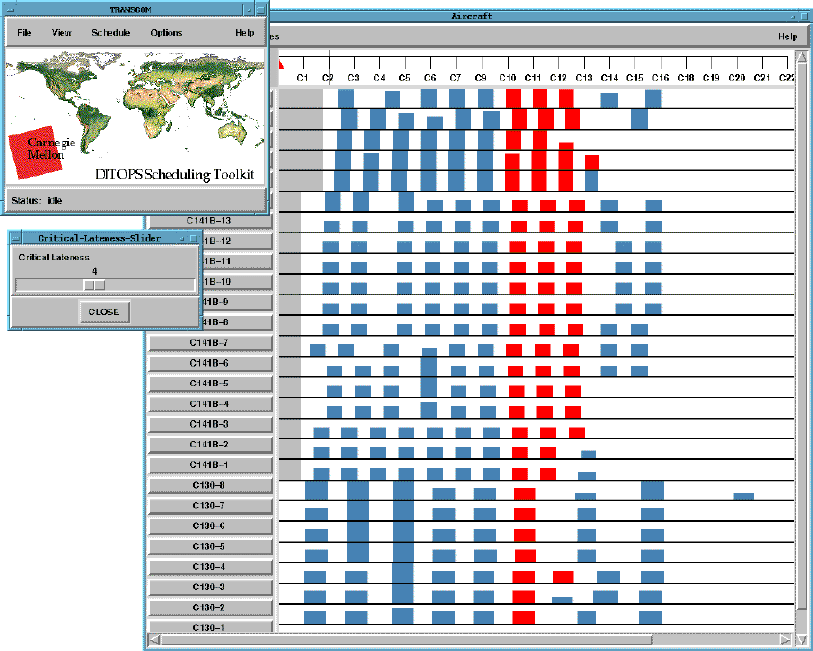|
|
|
|

Implementation |
|
DITOPS is built using an underlying scheduling framework called OZONE (aka
O3 aka Object-Oriented Opis). OZONE is implemented using object-oriented
representation and programming techniques, providing an extensible modeling
and scheduling framework that enables straightforward system customization
to account for the principal constraints and objectives of different scheduling
domains. The scheduler operates with respect to hierarchical models of
the processes and resources of the problem domain. Because of a layered
and extensible nature of the OZONE modeling and scheduling framework, new
application development is not limited to transportation problems: the
system can also be adapted to, say, manufacturing scheduling problems.
In practical terms the framework is a class library that contains classes
for the basic scheduling concepts and their specializations to some specific
areas (e.g. transportation). Protocols are provided for combining concepts
from the library, and extending the existing basic concepts into more specialized
ones.
Due to the configurability of DITOPS/OZONE it is easy to integrate it or parts of its functionality with other planning systems. In an early technology integration experiment (TIE) with SRI, DITOPS was used to perform resource capacity analysis for higher level course of action planning by integrating it with SRI's SOCAP planner running on the Common Prototyping Environment (CPE) developed by BBN. Some DITOPS functionality was also embedded into BBN's TARGET mission planning system to perform feasibility checking and conflict diagnosis of course of action plans. More recently the OZONE class library has been applied to develop a prototype system for aero-medical evacutation (re)planning. The current version of DITOPS runs on a Sun Sparcstation. A more portable version, aimed additionally at PC and Mac platforms and utilizing a Java-based interface is nearing completion. Interaction with the user takes place through a direct-manipulation user-interface which is centered around Gantt-diagrams of resource capacity usage (see Figure 1). In comparison to conventionally used simulation approaches to producing schedules for large-scale deployment problems, we have demonstrated that DITOPS is able to efficiently generate higher quality schedules while simultaneously satisfying a wider range of deployment constraints. For example, DITOPS is currently capable of generating a detailed 3000-movement TPFDD (Time-Phased Force Deployment Data) schedule in about 6 minutes (on a Sparcstation 10). Current efforts are extending and adapting the OZONE/DITOPS framework for application in two different scheduling domains:
|
Demonstrations |
|